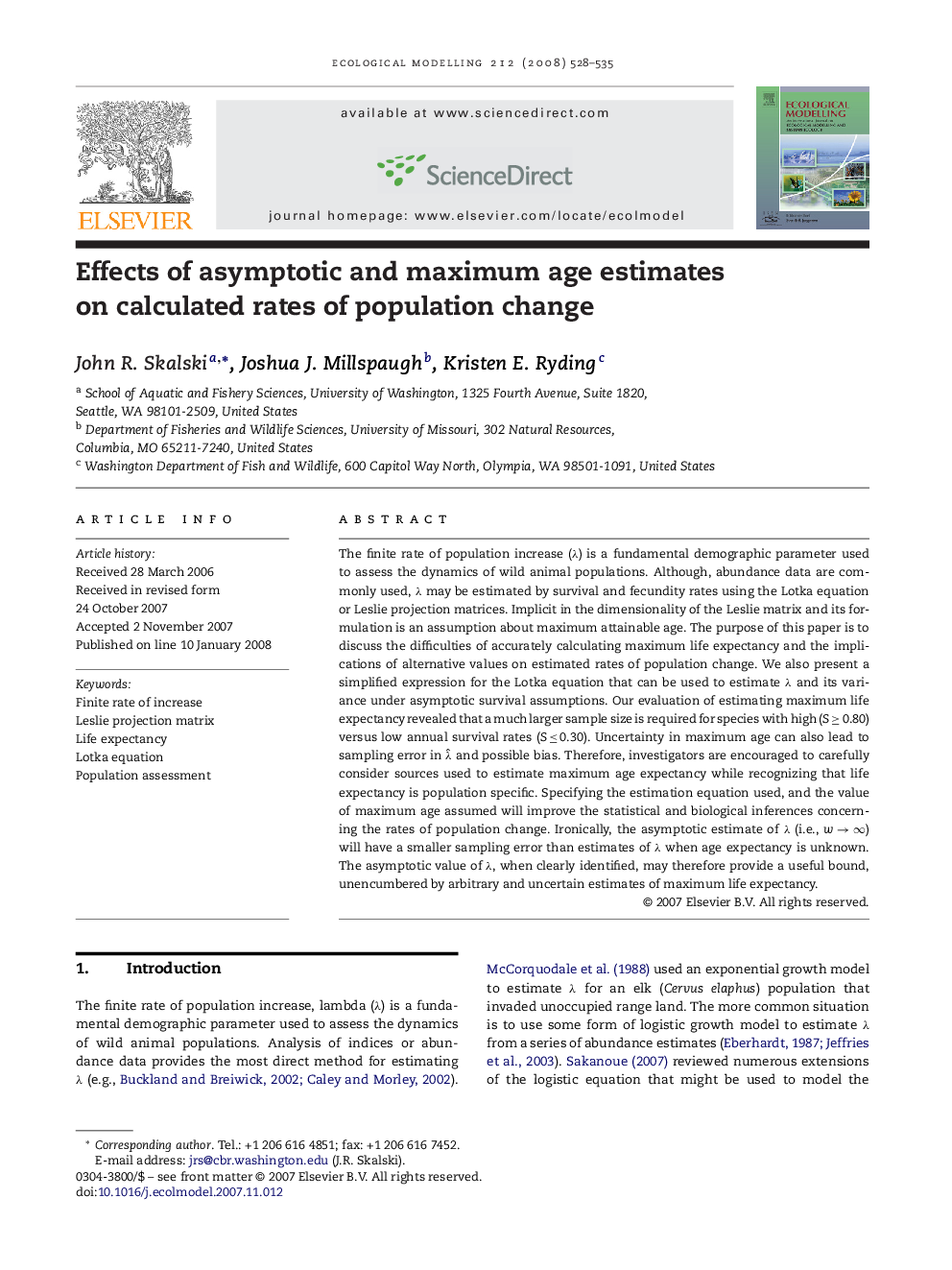| Article ID | Journal | Published Year | Pages | File Type |
|---|---|---|---|---|
| 4378330 | Ecological Modelling | 2008 | 8 Pages |
The finite rate of population increase (λ) is a fundamental demographic parameter used to assess the dynamics of wild animal populations. Although, abundance data are commonly used, λ may be estimated by survival and fecundity rates using the Lotka equation or Leslie projection matrices. Implicit in the dimensionality of the Leslie matrix and its formulation is an assumption about maximum attainable age. The purpose of this paper is to discuss the difficulties of accurately calculating maximum life expectancy and the implications of alternative values on estimated rates of population change. We also present a simplified expression for the Lotka equation that can be used to estimate λ and its variance under asymptotic survival assumptions. Our evaluation of estimating maximum life expectancy revealed that a much larger sample size is required for species with high (S ≥ 0.80) versus low annual survival rates (S ≤ 0.30). Uncertainty in maximum age can also lead to sampling error in λˆ and possible bias. Therefore, investigators are encouraged to carefully consider sources used to estimate maximum age expectancy while recognizing that life expectancy is population specific. Specifying the estimation equation used, and the value of maximum age assumed will improve the statistical and biological inferences concerning the rates of population change. Ironically, the asymptotic estimate of λ (i.e., w→∞w→∞) will have a smaller sampling error than estimates of λ when age expectancy is unknown. The asymptotic value of λ, when clearly identified, may therefore provide a useful bound, unencumbered by arbitrary and uncertain estimates of maximum life expectancy.
